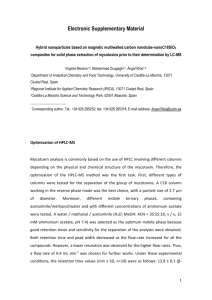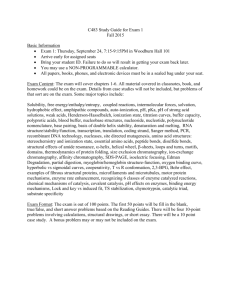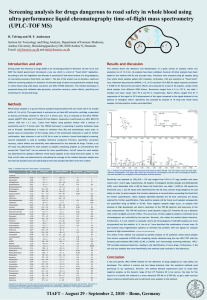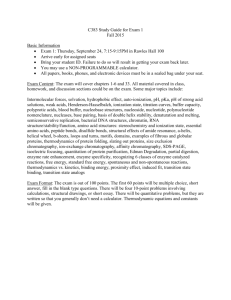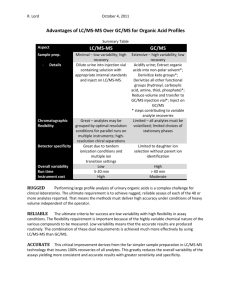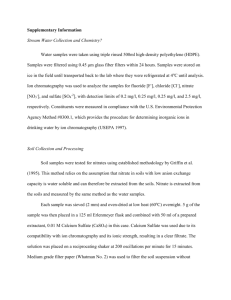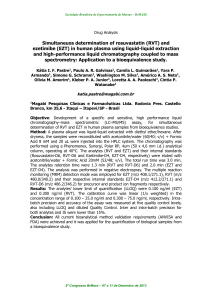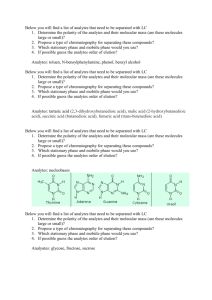simultaneous lc-ms analysis of acidic and basic analytes using
advertisement
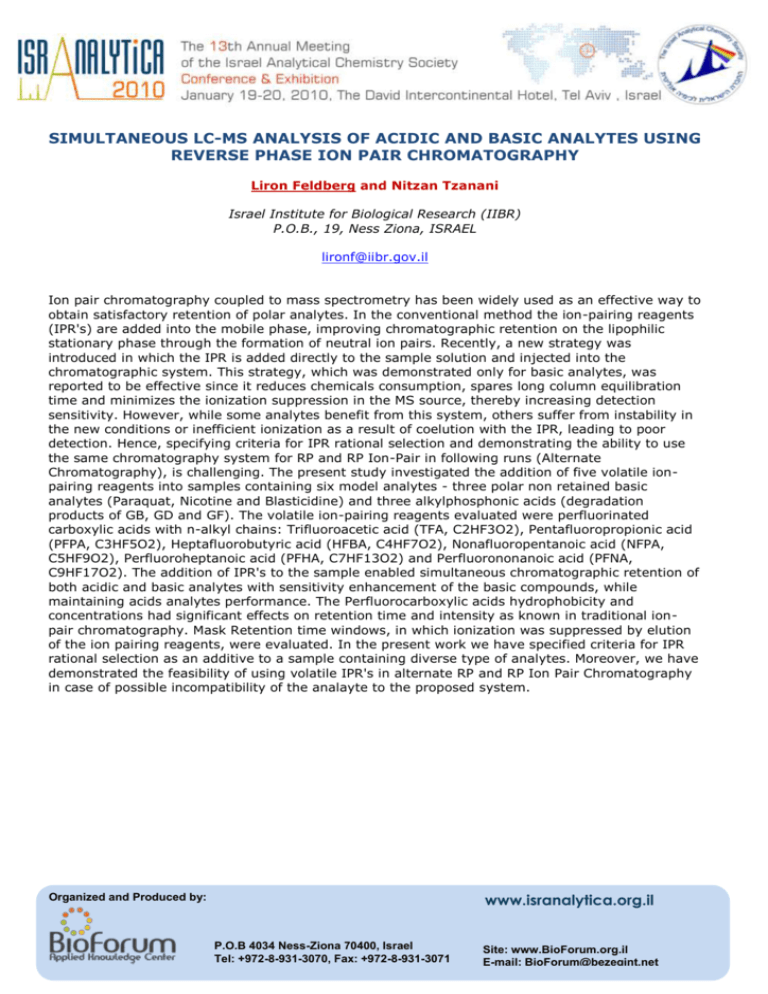
SIMULTANEOUS LC-MS ANALYSIS OF ACIDIC AND BASIC ANALYTES USING REVERSE PHASE ION PAIR CHROMATOGRAPHY Liron Feldberg and Nitzan Tzanani Israel Institute for Biological Research (IIBR) P.O.B., 19, Ness Ziona, ISRAEL lironf@iibr.gov.il Ion pair chromatography coupled to mass spectrometry has been widely used as an effective way to obtain satisfactory retention of polar analytes. In the conventional method the ion-pairing reagents (IPR's) are added into the mobile phase, improving chromatographic retention on the lipophilic stationary phase through the formation of neutral ion pairs. Recently, a new strategy was introduced in which the IPR is added directly to the sample solution and injected into the chromatographic system. This strategy, which was demonstrated only for basic analytes, was reported to be effective since it reduces chemicals consumption, spares long column equilibration time and minimizes the ionization suppression in the MS source, thereby increasing detection sensitivity. However, while some analytes benefit from this system, others suffer from instability in the new conditions or inefficient ionization as a result of coelution with the IPR, leading to poor detection. Hence, specifying criteria for IPR rational selection and demonstrating the ability to use the same chromatography system for RP and RP Ion-Pair in following runs (Alternate Chromatography), is challenging. The present study investigated the addition of five volatile ionpairing reagents into samples containing six model analytes - three polar non retained basic analytes (Paraquat, Nicotine and Blasticidine) and three alkylphosphonic acids (degradation products of GB, GD and GF). The volatile ion-pairing reagents evaluated were perfluorinated carboxylic acids with n-alkyl chains: Trifluoroacetic acid (TFA, C2HF3O2), Pentafluoropropionic acid (PFPA, C3HF5O2), Heptafluorobutyric acid (HFBA, C4HF7O2), Nonafluoropentanoic acid (NFPA, C5HF9O2), Perfluoroheptanoic acid (PFHA, C7HF13O2) and Perfluorononanoic acid (PFNA, C9HF17O2). The addition of IPR's to the sample enabled simultaneous chromatographic retention of both acidic and basic analytes with sensitivity enhancement of the basic compounds, while maintaining acids analytes performance. The Perfluorocarboxylic acids hydrophobicity and concentrations had significant effects on retention time and intensity as known in traditional ionpair chromatography. Mask Retention time windows, in which ionization was suppressed by elution of the ion pairing reagents, were evaluated. In the present work we have specified criteria for IPR rational selection as an additive to a sample containing diverse type of analytes. Moreover, we have demonstrated the feasibility of using volatile IPR's in alternate RP and RP Ion Pair Chromatography in case of possible incompatibility of the analayte to the proposed system. www.isranalytica.org.il Organized and Produced by: P.O.B 4034 Ness-Ziona 70400, Israel Tel: +972-8-931-3070, Fax: +972-8-931-3071 Site: www.BioForum.org.il E-mail: BioForum@bezeqint.net
